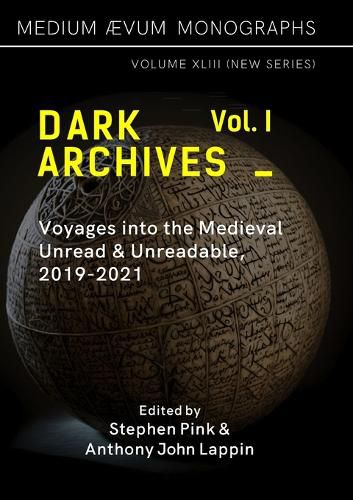Readings Newsletter
Become a Readings Member to make your shopping experience even easier.
Sign in or sign up for free!
You’re not far away from qualifying for FREE standard shipping within Australia
You’ve qualified for FREE standard shipping within Australia
The cart is loading…






This title is printed to order. This book may have been self-published. If so, we cannot guarantee the quality of the content. In the main most books will have gone through the editing process however some may not. We therefore suggest that you be aware of this before ordering this book. If in doubt check either the author or publisher’s details as we are unable to accept any returns unless they are faulty. Please contact us if you have any questions.
In our age of unprecedented access to information, the handwritten records of the medieval era remain overwhelmingly dark - unread and unreadable - confining modern scholarship to a tiny fraction of their totality. Yet this constraint is fast disappearing as a range of new technologies transform our understanding of the Dark Archives and thus of the medieval, to an extent unseen since the invention of movable type and voyages of discovery in the fifteenth century delimited the medieval period itself. This select proceedings of the Dark Archives events of 2019-21 presents the first overview of the emergent field of Dark Archives studies, and its framing questions: just how large is the totality of medieval writing and its interrelations (or 'Graphosphere'), extant and destroyed, and what materials is it composed of? What digital technologies are emerging to scan, transcribe and order this totality, a task otherwise beyond uncountable human scholarly lifetimes? More broadly: what of the physical record can, cannot, or can only be captured digitally? What worlds of scholarship and knowledge might we build upon a fully-mapped Graphosphere? Our pioneering contributors present the wealth of approaches now being marshalled in quest of answers, from manuscript statistics, the reconstruction of lost documents, fragmentology, optical character recognition, crowdsourcing and spectrography, to the metaphysical reconsideration of knowledge and of the archive.
$9.00 standard shipping within Australia
FREE standard shipping within Australia for orders over $100.00
Express & International shipping calculated at checkout
This title is printed to order. This book may have been self-published. If so, we cannot guarantee the quality of the content. In the main most books will have gone through the editing process however some may not. We therefore suggest that you be aware of this before ordering this book. If in doubt check either the author or publisher’s details as we are unable to accept any returns unless they are faulty. Please contact us if you have any questions.
In our age of unprecedented access to information, the handwritten records of the medieval era remain overwhelmingly dark - unread and unreadable - confining modern scholarship to a tiny fraction of their totality. Yet this constraint is fast disappearing as a range of new technologies transform our understanding of the Dark Archives and thus of the medieval, to an extent unseen since the invention of movable type and voyages of discovery in the fifteenth century delimited the medieval period itself. This select proceedings of the Dark Archives events of 2019-21 presents the first overview of the emergent field of Dark Archives studies, and its framing questions: just how large is the totality of medieval writing and its interrelations (or 'Graphosphere'), extant and destroyed, and what materials is it composed of? What digital technologies are emerging to scan, transcribe and order this totality, a task otherwise beyond uncountable human scholarly lifetimes? More broadly: what of the physical record can, cannot, or can only be captured digitally? What worlds of scholarship and knowledge might we build upon a fully-mapped Graphosphere? Our pioneering contributors present the wealth of approaches now being marshalled in quest of answers, from manuscript statistics, the reconstruction of lost documents, fragmentology, optical character recognition, crowdsourcing and spectrography, to the metaphysical reconsideration of knowledge and of the archive.